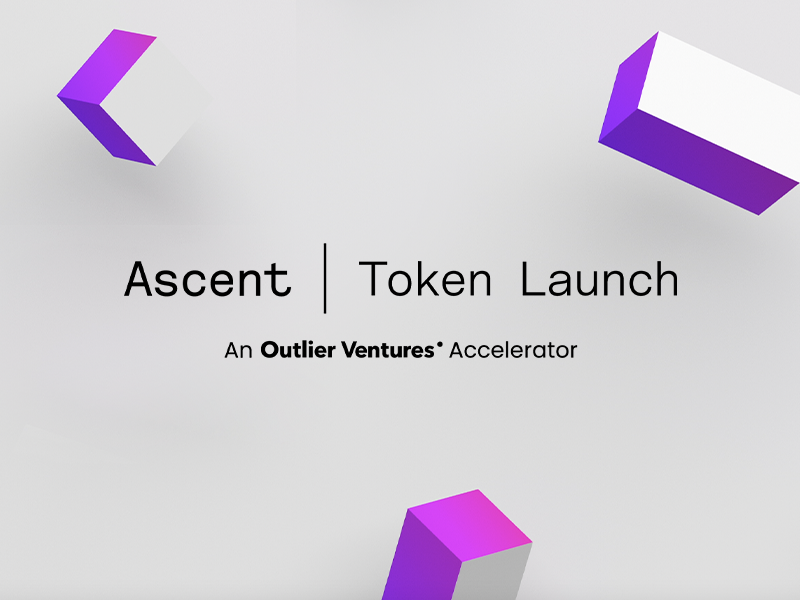If you pop into five different shops around London, you’ll find the same product designed in seven different packages at three different prices for ten types of customers. That’s because marketing isn’t about what you’re actually selling, it’s about who you’re selling it to.
When we look at the early stages of successful companies, they all started with a story; a mission that guides them through their journey. As Des Martin, Outlier’s Chief Marketing Officer, likes to say, people are hardwired for stories. A good story makes people want to be part of it; it elicits an emotional response.
With this in mind, start thinking about what problem you’re trying to solve for a certain group of people.
For example, if you’re building an NFT marketplace, the answer might seem obvious: people who buy and sell NFT’s.
Ask yourself: Why are they buying NFTs? Is that a big enough group of people to sustain and grow your project? Are the people buying NFT’s now going to be the same people buying NFT’s tomorrow? After some introspection, you might find that the right group to speak to is actually people not trading NFT’s; maybe they are an untapped market in contrast to the other crowded and small one.
Once you’ve figured this out, ask yourself: what would make people who aren’t trading NFT’s want to trade them? How would they want that platform to look? What words and images would turn them away?
What I’m getting at isn’t about NFT marketplaces at all. It’s not even about consumer-facing businesses. It’s a simple principle: figure out who the right crowd is, find what motivates them, and design your product around them.
Who are you trying to solve it for?
Most people, even if they don’t wear flip flops, will recognize the Havaianas iconic thong flip flop. Havaianas are worn by people across nationalities and social classes in a multitude of styles. You’ll find them on the runway in Paris and in rural beach towns in Brazil, where the company hails from. If you look at the website’s history section, you’ll see a strong “About Us” section telling the story of how it started: a small sandal brand making japanese thongs out of Brazilian rubber. A transatlantic tale.. In this way, the company sells the consumer the idea of flip flops.
Most successful brands aren’t the first to market; they’re simply the first ones to do it in a particular way that appealed to consumers. Steve Jobs didn’t invent the computer or the smartphone, but he was the first to think of them as a “piece of furniture”; something that people wanted to show off. Google was not the first search engine, for instance, but they were the first to make the concept useable.
If we turn back to clothing, you’ll see that the most successful brands sell a lifestyle. Levi’s, one of the most recognizable brands in the world, have managed to connect with their customers through (for better or worse) selling a romanticized idea of American masculinity. This all goes to say that product is just one way in which you can do something that others haven’t before.
You need to become obsessed with your customer’s buyer persona; What do they have for breakfast? Do they cycle to work or drive? Do they spend their free time watching sports or going to concerts? Developing buyer personas is as important for B2B tech companies as it is for B2C companies selling jeans. Persona-based marketing is essential towards figuring out who you’re targeting.
Why I’ll never buy a smartwatch
At the time of this writing, I’m 26; I live in an East London warehouse; I spend time with my friends, play/listen to music, travel, and write. For better or worse, I’m a parody of a “neo-bohemian”.
Now ask yourself a question: would I be interested in buying a smartwatch?
Absolutely not.
Now don’t get me wrong, there’s nothing wrong with smartwatches. Maybe they’re practical for fitness. It might even be nice to get notifications on your wrist. There’s probably people out there that want to know their resting heart rate at all times.
These are all valid reasons why someone would want one of these nifty devices. But it won’t work on me for one simple reason.
I find smartwatches to not only be really ugly but unnecessarily techy. Along with skinny jeans, they might be the antithesis of cool. For better or worse, a smartwatch, more than a quarter-zip sweater or a roller suitcase, are prime symbols of techie consultant culture. Of course, I work in tech; but I do try to downplay it in my personal brand.
In reality, no one would probably care about or even notice my smartwatch; and maybe my cardiac health would be better. But buying a smartwatch would make me admit that I’m actually just another “alternative” guy working in tech/VC; something which I don’t want to admit. What I’m getting at, through that ironically-transparent anecdote, is that people buy the idea of a product; something which appeals to their concept of self.
Conclusion:
Havaianas are probably not the best sandals; Levis are probably not the best Jeans. And WeTransfer might not be the best filesharing platform. But they’re simply good enough to allow their story to do the talking.
I’ve seen many startup founders get so siloed in the product that they forget about who they’re talking to. Frankly, there are many good products from a technical standpoint, just like there are many good sandals. But people don’t buy sandals, they buy Havaianas.
So here are some key takeaways:
- People care about stories, not about product specs
- Conduct focus groups and engage in persona-based marketing but don’t lean too much on it. Understand that there are nuances which you will have to continue evolving to understand
- Listen to customers; don’t build for yourself
- Acknowledge your bias and limitations. You can’t understand every nuance of customers’ preferences. People don’t always fit neatly into boxes
- Make sure your product has something unique that will make people want it. It doesn’t have to be better than the competition; it just has to be more appealing
Where is Web3’s killer story?
Web3 presents a new opportunity. One in which there are new needs being created and filled every day. Tokenization, for instance, is adding whole new dimensions to community-building. Web3 is also an open ocean.
But with the exception of a few exchanges, few Web3 companies are household names.
In Web3, we like to say that we’re “still early”. But maybe we’re not that early. Maybe we’re just not talking to the right people. We’re trying to sell smartwatches to hipsters without thinking about what would make those people want it. Maybe we’re just building for the wrong people.
I agree that the Web3 space can drive a transformation in how people interact with the internet. But that can only happen if those people are involved. The question we have to ask ourselves is: what’s in it for them? If we don’t have a clear answer to that question, then we will always be “early”.




